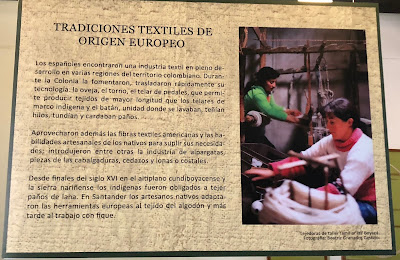I have been a busy continuous strand weaver this year. Now semi retired, I have more time. But I am discovering that the secret of semi retirement is using one's time well. I've finished some things. I discovered the cut-strand technique on the "Tri-Loom and Continuous Strand Weavers" Facebook Group. You simply loop the strand of yarn over the hypotenuse nail and weave on the weaving side and tie it on each side. Each strand is the same length so you can pre-cut. I am Ms. Spontaneous so I never do.
Here is the first one that I did last year; this technique was a revelation. I used leftover wool and did the twisty-braid thing on the ends. Strand were doubled and quadrupled to get a thickly woven fabric. Five foot hypotenuse on my standing loom.
Below is another five foot hypotenuse shawl done on my standing loom in various yarns. I do love those colors that are close on the color wheel, aka analogous colors, in this case red-orange with some pink-yellow tones. Most yarns are multicolored in that range, some handspun.
I found a fun way to photo things on my antique hall tree.
I came up with a way to loop the yarns at the top nail and weave one way with one color and the other way with the other; creating a checkerboard effect.
This one is all handspun from silk and polwarth from https://frabjousfibers.com/, done on my four foot hypotenuse table triloom. It's very soft.



















































